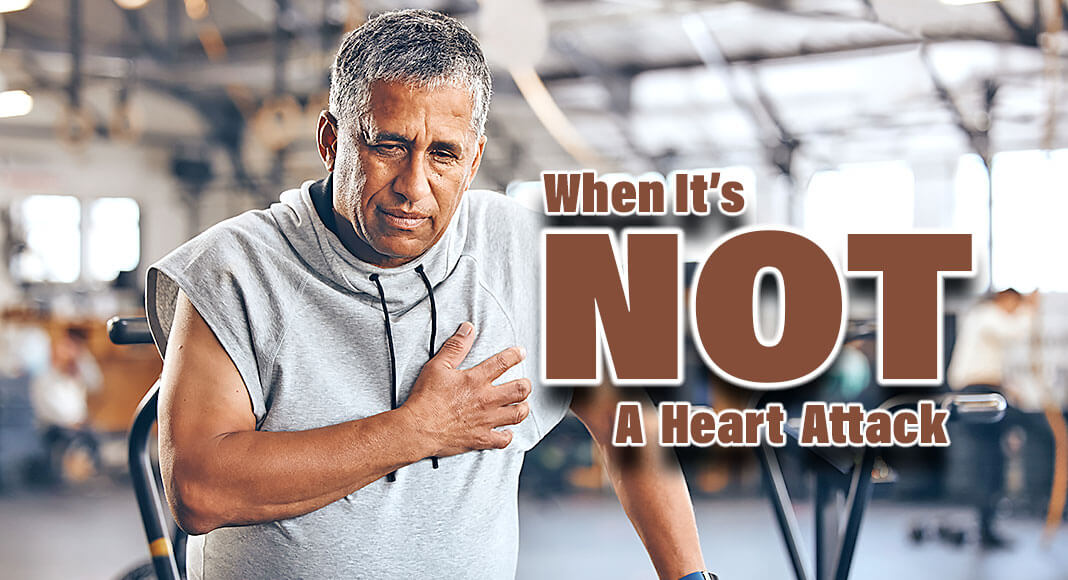
Mega Doctor News
By Michigan Medicine – University of Michigan
By Noah Fromson
Newswise — Aside from injuries, the second most common reason adults in the United States go to the emergency department is chest pain, accounting for more than 6.5 million visits annually. Despite the growing prevalence of cardiovascular disease nationwide, more than half of these chest pain visits have noncardiac causes.
But chest pain, and the possibility of a heart problem, are not to be taken lightly. There can be several reasons a person experiences it, and the likelihood of a cardiac issue hinges mostly on a patient’s risk profile, says Nicole Bhave, M.D., a cardiologist at the University of Michigan Health Frankel Cardiovascular Center.
Here, Bhave answers several essential questions about noncardiac chest pain, its causes and treatments, and how it differs from heart attack.
What most commonly causes noncardiac chest pain?
Bhave: We see three main causes of noncardiac chest pain or discomfort. The first is gastroesophageal reflux disease, commonly called GERD. This form of acid reflux causes heartburn. Your body doesn’t always know how to express pain in the stomach or esophagus, so the pain is often “referred” to the center of the chest.
Some people may notice that certain foods trigger it, especially if they are spicy, fatty or acidic. If you eat a really large meal, or if you have alcohol or a lot of caffeine, these can all cause heartburn. That pain will often become worse if you lie down, and it can present as chest pain.
Pain can also originate from the muscles and joints in the chest wall. A particularly strenuous workout or heavy lifting can lead to strain of those muscles. Similarly, if you’ve been coughing because of a respiratory illness, that can cause strain on the muscles and cause chest discomfort as well. Some people who have problems with abnormal curvature of the spine may also experience chest discomfort.
Finally, emotional stress or anxiety are very common reasons for people to have chest tightness or discomfort. If you have a panic attack, you may experience a feeling of the heart racing or pounding, often associated with chest tightness or pressure and difficulty breathing.
How can you differentiate between noncardiac chest pain and heart attack?
Bhave: It can be quite challenging to distinguish, and we often can’t be certain until we do an evaluation, like an electrocardiogram, also known as an EKG, or a blood test.
As physicians, we are more concerned about chest pain in patients who have risk factors for heart disease, such as high blood pressure, diabetes, kidney disease and being over the age of 60. These conditions all increase risk for coronary artery disease, or blockages in the heart arteries.
If you have chest pain that’s new and severe, or associated with other symptoms like shortness of breath or nausea, these are reasons that you should go to the emergency department. Classically, heart pain is in the center or left side of the chest, and it may radiate down the left arm or into the jaw. But not every patient experiences the typical “elephant-on-your-chest” feeling. Sometimes, nausea, shortness of breath or feelings of indigestion are the most prominent symptoms. A lot of times when people are having heart attacks, they just feel really unwell, maybe cold and clammy. They know inherently that something is wrong.
On the other hand, if you are having chest pain that is very brief, lasting only seconds or minutes and going away, without any of these associated symptoms, like the shortness of breath or nausea, it may not be heart-related. The same goes for chest discomfort that gets better with antacids, muscle relaxants, warm compresses, or relaxation and deep breathing.
Not all heart-related chest pain is due to blockages in the heart arteries. A condition called pericarditis, which is inflammation around the lining of the heart, can cause chest pain that gets worse with deep breaths or with lying down. Pulmonary embolism, or a blood clot in the lung, can cause shortness of breath, elevated heart rate and chest pain that gets worse with deep breathing. If you are having chest pain with these kinds of features, you should go to the emergency room.
When should you go to the doctor with chest pain?
Bhave: This is a difficult question, but it most often boils down to the severity of the pain and the heart attack symptoms we mentioned above. If the pain is so severe that you feel like you can’t function, or if you are experiencing central or left-sided chest pain — especially if you have nausea or a cold and clammy feeling alongside it — it is always safest to go to the emergency room. With chest pain, it’s best to be cautious.
How is noncardiac chest pain treated?
Bhave: Musculoskeletal pain in the chest wall can usually be treated with conservative measures, like taking ibuprofen, applying warm compresses to the site and resting. Pain related to acid reflux usually gets better with antacids or medications like famotidine (Pepcid) or omeprazole (Prilosec). Changes to your lifestyle can also mitigate this pain. Not eating late at night and minimizing the quantity of the acidic and fatty foods you eat are a good start.
For noncardiac pain caused by anxiety, depression or another mental health condition, there are several ways to approach treatment. You could talk to your primary care provider about starting an anti-anxiety medication or working with a therapist. The mind-body connection is very powerful, and stress reduction techniques like deep breathing and meditation are often helpful.











